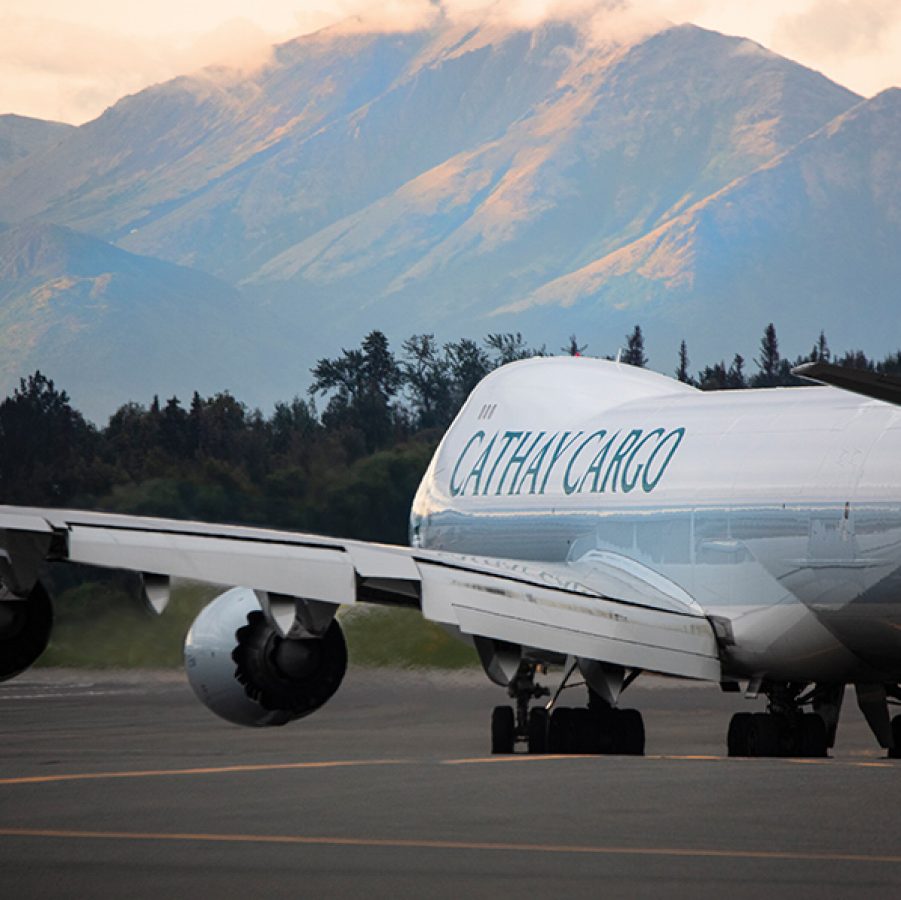Navigating snowy skies: how Cathay Pacific pilots master winter weather
Aircraft are not at their most elegant on the ground. In the air, their aerodynamic advantage gives them the grace of a swan. On the ground, they become more unwieldy, especially in ice and snow. Then they become more like an elephant in high heels on a marble floor, and getting around requires extra-careful thought and lower speeds.
It’s always cold somewhere in the world, so Cathay Pacific’s pilots spend a lot of time practising to navigate these conditions, as Head of Line Operations Captain James Toye explains. “Most of our simulator sessions in Hong Kong feature ice and snow,” he says.

Take the pushback, when a tug pushes the aircraft from the gate to the taxiway. In normal conditions you’d hear the engines spooling up one by one along the way. Not so in icy conditions: "if it’s slick, the imbalance created by just starting one engine might put a twist on the aircraft and pull the tug around on slippery tarmac. You don’t want that,” says Line Operations Manager Captain Tony Pringle. When it’s slippery, crews will wait until the tug is disconnected before starting up.
You may also notice that when it’s cold, pilots will not “configure” the aircraft for take-off by extending the flaps and slats on the wings, which give the aircraft lift at lower speeds. “That’s so we don’t pick up ice and slush as we taxi to the runway,” says Captain Pringle. It can be a bumpy journey if it’s really cold: “If you’ve got an aircraft that’s been parked for a while, there’ll be flat spots on the tyres, which take a while to work out at low temperatures. You might feel you’re in a Flintstones car,” he adds.

Before entering the runway, crews will often ask air traffic control for more time to configure and go through longer checklists, which will include calculations for take-off distance, the “V1” point of no return and so on, depending on the condition of the runway. “Airports continuously publish the status of the runway and the friction coefficients that we use in these calculations,” says Captain Toye.
Cold air is denser and wintry conditions require more thrust – factors that are theoretically ideal for a rapid take-off. “Performance-wise there’s a lot going for you, but then all the aspects that slow you down go against you,” says Captain Toye. For example, powdery snow offers more resistance and extends the time it takes to gain the aerodynamic advantage that brings the rudder into play, and crosswinds can be challenging if the runway friction is lower.
Landing comes with some challenges too. Captain Pringle describes descending into snow as feeling like a Star Wars starfighter entering warp speed. “You can see snowflakes smashing into you, like little bits of white light,” he says. That makes powerful airport lighting critical. “A lot of times we turn our lights off to see them, rather than just lighting up all the snow around us.”
At touchdown in optimal conditions, a large amount of deceleration comes from the anti-lock wheel brakes. In snow, they are less effective. “We use reverse thrust to take up the majority of the braking,” says Captain Toye. And because taxiways often aren’t at the same level of preparedness as runways, the simple task of turning off the runway “could be one of the most difficult things you do”, he adds. “You rely on a small nose wheel to take on a turning force. Ordinarily, you can take on high-speed exits of 40 knots or more. This can be reduced to just two or three knots in winter.”
Slow, steady, but safe. The watchwords of winter.
More inspiration
- China – the Chinese Mainland, Hong Kong SAR, Macao SAR and Taiwan Region
- Hong Kong SAR - English
- Chinese Mainland (China) - English
- Taiwan, China - English
- 香港特別行政區 - 繁體中文
- 中国內地 - 简体中文
- 中國台灣 - 繁體中文
- Africa
- South Africa - English
- Asia
- Bangladesh - English
- Korea - English
- Singapore - English
- Cambodia - English
- 한국 - 한국어
- Sri Lanka - English
- India - English
- Malaysia - English
- Thailand - English
- Indonesia - English
- Maldives - English
- ประเทศไทย - ภาษาไทย
- Indonesia - Bahasa Indonesia
- Myanmar - English
- Vietnam - English
- Japan - English
- Nepal - English
- Việt Nam - tiếng Việt
- 日本 - 日本語
- Philippines - English
- Australasia
- Australia - English
- New Zealand - English






